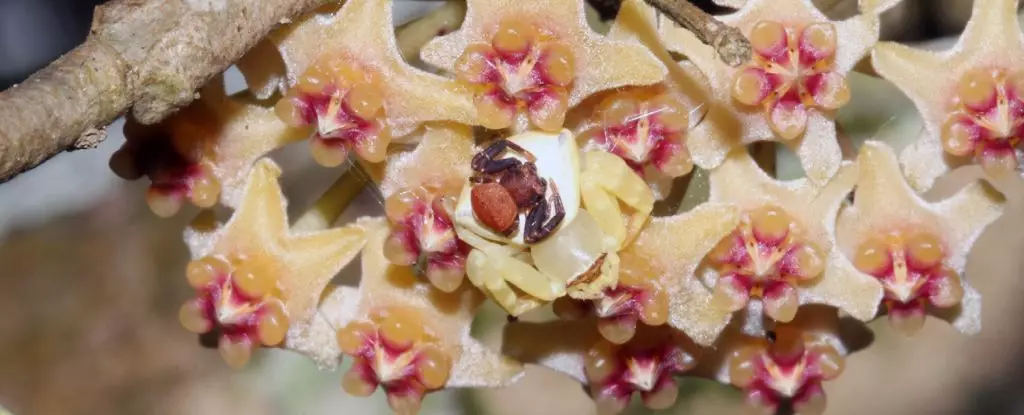In the vast and competitive world of nature, survival is the ultimate goal for every living creature. One of the most intriguing strategies for survival is camouflage mimicry. Many species have evolved unique ways to blend into their surroundings in order to avoid predators or sneak up on unsuspecting prey. From birds and octopuses to frogs and caterpillars, creatures around the world have mastered the art of invisibility through their incredible adaptations.
One fascinating example of camouflage mimicry comes from the rainforests of China, where a pair of masked crab spiders (Thomisus guangxicus) have been observed working together to disguise themselves as a flower. Environmental scientists Shi-Mao Wu and Jiang-Yun Gao from Yunnan University documented this behavior, which could potentially be the first known case of cooperative camouflage in the wild.
Crab spiders are adorable and colorful arachnids that are harmless to humans. They rely on their ability to blend in with their environment, mimicking leaves or petals to avoid detection by predators. Unlike other spiders, crab spiders do not spin webs; instead, they patiently wait to ambush their prey as it comes into close proximity. The masked crab spider exhibits a significant sexual dimorphism, with males being much smaller and darker than females.
In a tropical rainforest in Yunnan, Wu and Gao came across a male and female masked crab spider on a Hoya pandurata plant. The male spider was positioned on the back of the female, mimicking the plant’s pistils and stamens, while the female mimicked the corolla of the flower. When viewed together, the two spiders perfectly matched the coloration and appearance of the flower. This cooperative mimicry was a remarkable find and could shed light on previously unknown behaviors in crab spiders.
While the researchers believe they may have discovered the first documented case of collaborative mimicry in spiders, further investigation is needed to confirm this hypothesis. It is unclear whether the behavior observed was intentional or coincidental, and more observations of crab spiders in similar situations could provide valuable insights. Studying the molecular clocks of both the spider and the plant could reveal whether they have co-evolved, offering clues to the fascinating behavior of these creatures.
The world of camouflage mimicry in nature is filled with surprises and mysteries waiting to be uncovered. The unique partnership between the masked crab spiders highlights the incredible adaptations that organisms have developed to survive in their environments. By studying and observing these behaviors, scientists can gain a better understanding of the complex interactions between species and the strategies they employ for survival. The discovery of cooperative mimicry in spiders opens up a new avenue of research that could reveal even more astonishing secrets of the natural world.

Leave a Reply